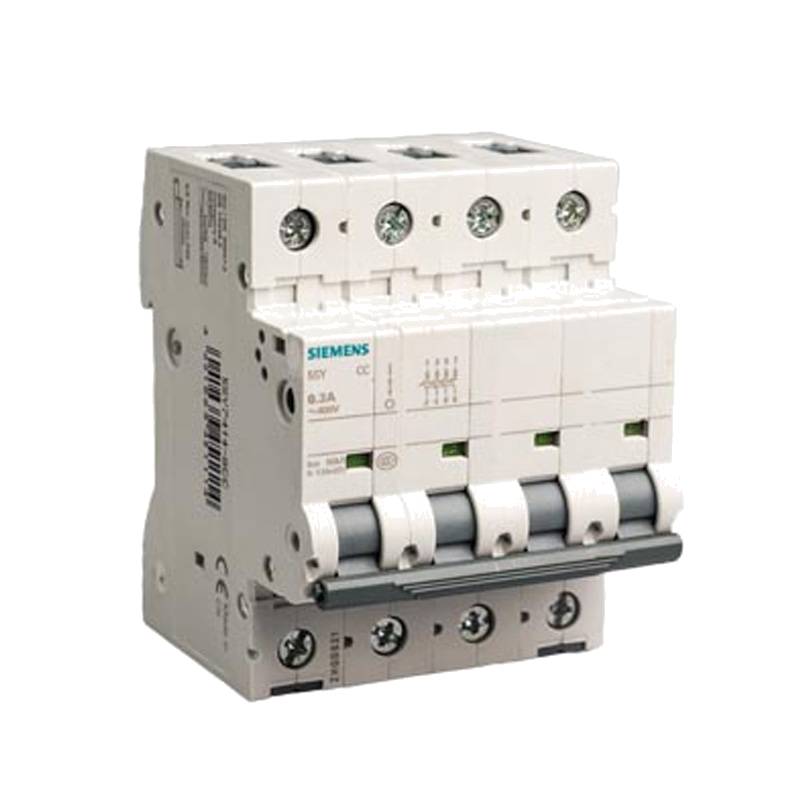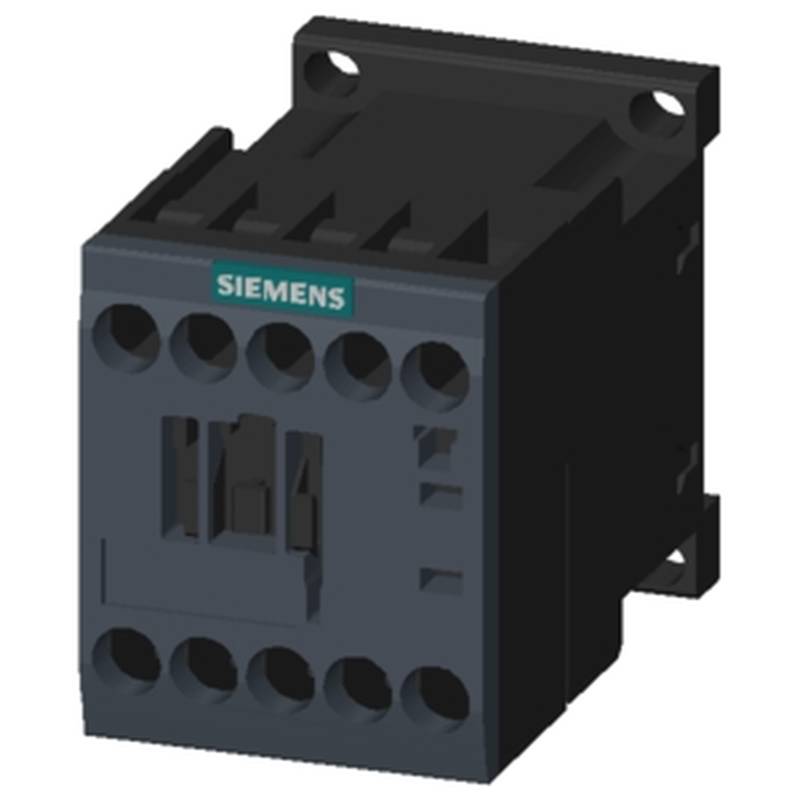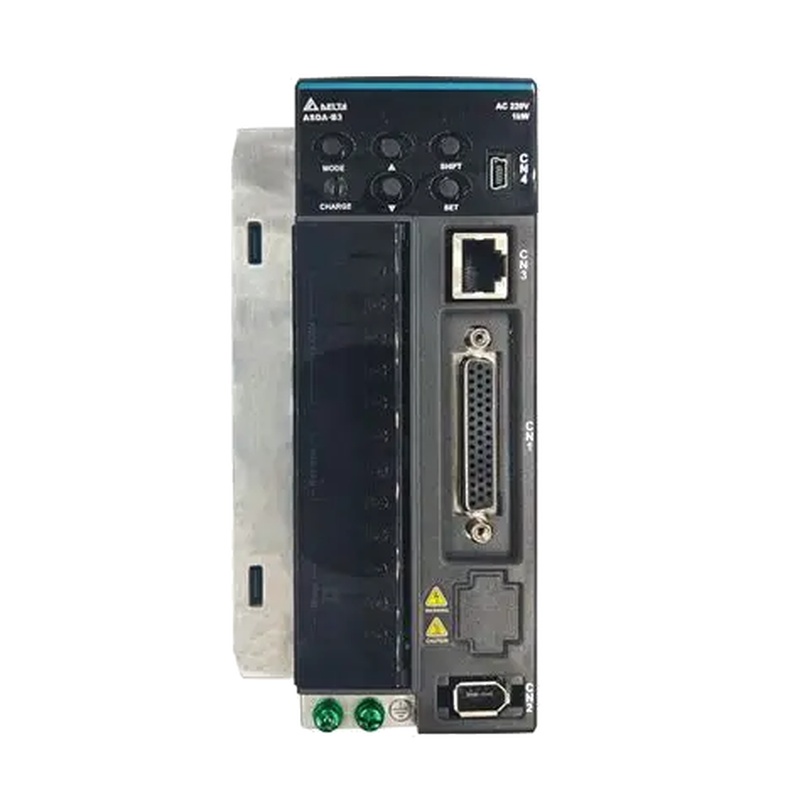
The Siemens 5SY6613-7CC Miniature Protection Circuit Breaker Switch (3P+N, 13A) is a robust and reliable component engineered for advanced electrical protection in demanding industrial environments. This circuit breaker is designed to safeguard electrical circuits from overcurrents and short circuits, ensuring operational continuity and equipment safety. Its three-pole plus neutral configuration offers comprehensive protection for three-phase systems, while the 13A rating is suitable for a variety of moderate load applications. Key advantages include a high breaking capacity of 6kA (acc. to EN 60898) and 15kA (acc. to IEC 60947-2), a tripping characteristic class C for effective protection against both overload and short-circuit faults, and an energy limitation class of 3, minimizing damage during fault events. Designed for AC/DC voltage types, it operates with a rated supply voltage of 400V AC, making it compatible with standard industrial power grids. The compact design, with a width of 72mm and a mounting depth of 70mm, facilitates efficient integration into control panels and switchgear.
Product Specifications
| Feature | Specification |
| :---------------------------- | :--------------------------------------------- |
| Product Number | 5SY6613-7CC |
| Type | Miniature Circuit Breaker |
| Poles | 3P+N (3-pole + Neutral) |
| Rated Current (In) | 13A |
| Tripping Characteristic Class | C |
| Rated Voltage (AC) | 400V |
| Breaking Capacity (EN 60898) | 6kA |
| Breaking Capacity (IEC 60947-2) | 15kA |
| Energy Limitation Class | 3 |
| Voltage Type | AC/DC |
| Degree of Pollution | 3 |
| Overvoltage Category | III |
| Width | 72mm |
| Mounting Depth | 70mm |
| Mechanical Service Life | 10,000 operating cycles (typical) |
| Protection Class | IP20 (with connected conductors) |
| Terminal Type | Screw-type terminals |
| Connectable Conductor Cross-Section | Solid: 0.75-35 mm², Stranded: 0.75-35 mm², Finely stranded with wire end processing: 0.75-25 mm² |
| Tightening Torque | 2.5-3.5 N·m |
| Halogen-free | Yes |
| Sealable | Yes |
| Silicon-free | Yes |
Core Features & Market Positioning
The Siemens 5SY6613-7CC is positioned as a high-performance protective device within Siemens' SENTRON product line, known for its reliability and adherence to stringent international standards such as IEC 60947-2 and EN 60898. Its 6kA and 15kA breaking capacities offer a significant safety margin for fault currents, differentiating it from lower-rated breakers in similar applications. The C-type tripping characteristic is a key feature, providing robust protection against both inductive and resistive loads common in industrial motor control and lighting circuits, without being overly sensitive to nuisance tripping during motor startup surges. The inclusion of neutral conductor switching ensures complete isolation of the circuit when the breaker is tripped, enhancing safety during maintenance. Its construction emphasizes durability, with a typical mechanical service life of 10,000 operating cycles and resistance to shock (150m/s² at 11ms). The halogen-free and silicon-free properties align with environmental and safety regulations in sensitive industrial settings.
Key Application Scenarios
This 3P+N circuit breaker is exceptionally well-suited for protecting main power distribution circuits in industrial facilities, control cabinets, and machinery. Specific applications include safeguarding three-phase motors, pumps, ventilation systems, and other inductive loads that require reliable overcurrent and short-circuit protection. Its 400V AC rating makes it ideal for European and other 400V grid systems. The 13A current rating targets medium-power equipment. In panel building, the 5SY6613-7CC serves as a fundamental protective component, ensuring compliance with safety standards like EN 60204-1 for machinery. It is also employed in building services and electrical infrastructure for protecting sub-circuits where a neutral conductor must also be switched.
Practical System Integration Guidance
Integrating the Siemens 5SY6613-7CC into existing electrical systems is straightforward due to its standardized form factor and connection terminals. The breaker occupies four pitch units (72mm width) on a standard DIN rail. For installation, ensure the power supply is de-energized. Connect the line conductors (L1, L2, L3) and the neutral conductor to the appropriate top terminals, and the load conductors to the bottom terminals. The tightening torque for the screw-type terminals should be maintained between 2.5 and 3.5 N·m to ensure secure connections and prevent overheating. For finely stranded conductors, wire end ferrules are recommended to prevent individual strands from splaying and causing short circuits. The unit is designed for touch-proof operation with connected conductors, offering enhanced safety during installation and maintenance. Compatibility with modular supplementary devices, such as shunt releases or auxiliary contacts, allows for remote operation and signaling capabilities.
Operation and Risk Mitigation
The Siemens 5SY6613-7CC operates automatically upon detecting overcurrent or short-circuit conditions. The C-characteristic ensures that it trips within a specific current range (typically 5 to 10 times the rated current) for short circuits, while offering a delay for inrush currents of inductive loads. In case of a fault, the breaker trips, interrupting the circuit. To reset, identify and rectify the cause of the fault. If the breaker trips repeatedly without apparent cause, it may indicate an underlying system issue, such as a persistent overload or a developing short circuit, requiring thorough investigation. Never attempt to reset a breaker if the fault condition persists. The IP20 rating means protection against solid objects greater than 12.5mm but requires additional enclosure for protection against moisture and dust. Regular visual inspection and periodic testing, as per local electrical codes, are recommended to ensure continued reliable operation and mitigate risks associated with electrical faults.
Scalability & Long-Term Value
The Siemens 5SY6613-7CC's value extends beyond its immediate protective function. As part of the broader Siemens SENTRON portfolio, it offers excellent compatibility with other Siemens low-voltage components, enabling seamless integration into larger power distribution systems and control panels. This interoperability is crucial for scalable solutions where future expansions or upgrades might be necessary. While the 5SY6613-7CC is a mature product, Siemens' commitment to maintaining product lifecycles and offering support ensures its long-term viability in industrial applications. The ability to integrate supplementary devices like auxiliary contacts or alarm modules means the breaker can be part of a more sophisticated monitoring and control system, potentially linking into IIoT platforms for digitalized energy management and predictive maintenance strategies, thus offering significant long-term value and operational insight.
Frequently Asked Questions (FAQs)
Q1: What is the breaking capacity of the Siemens 5SY6613-7CC circuit breaker?
The Siemens 5SY6613-7CC features a breaking capacity of 6kA according to EN 60898 standards. This rating is crucial for ensuring the breaker can safely interrupt fault currents under normal installation conditions.
It also boasts a higher breaking capacity of 15kA according to IEC 60947-2. This more rigorous standard is typically applied in industrial and specialized applications, offering enhanced protection.
This dual rating provides flexibility and assurance, suitable for a wide range of applications from residential to heavy industrial settings.
Q2: What does the "C" in the tripping characteristic "C" signify for this breaker?
The "C" characteristic indicates the breaker's response to current surges. It is designed to trip when current reaches 5 to 10 times the rated current.
This makes it ideal for applications with moderate inductive loads, such as motors, transformers, and lighting, where temporary inrush currents are common.
It balances protection against short circuits with immunity to nuisance tripping caused by these normal operating surges.
Q3: Can the Siemens 5SY6613-7CC be used in DC circuits?
Yes, the Siemens 5SY6613-7CC is rated for AC/DC voltage types. This versatility allows its use in certain DC applications.
For DC operation, it has a maximum rated operating voltage of 72V. It's important to verify the specific DC system voltage against this limit.
Ensure that the circuit's fault current levels do not exceed the breaker's DC breaking capacity ratings, if applicable and specified.
Q4: How do I correctly install the Siemens 5SY6613-7CC circuit breaker?
Ensure the power supply is completely de-energized before commencing installation. Mount the breaker onto a standard DIN rail; it occupies four pitch units.
Connect the incoming power conductors (L1, L2, L3, and N) to the top terminals and outgoing load conductors to the bottom terminals. Utilize a tightening torque of 2.5-3.5 N·m for secure screw connections.
For finely stranded conductors, use appropriate wire end ferrules to ensure a safe and reliable connection. The breaker is touch-proof with connected conductors.
Q5: What is the significance of the "3P+N" configuration?
"3P+N" signifies that the circuit breaker has three poles for the phase conductors (L1, L2, L3) and an additional pole for the neutral conductor (N).
This configuration ensures that all live conductors, including the neutral, are disconnected simultaneously when the breaker trips. This is vital for complete circuit isolation during maintenance or fault conditions.
It is standard for protecting three-phase systems where the neutral conductor carries current, such as in many industrial motor circuits or distribution boards.
Q6: Can supplementary devices be added to the Siemens 5SY6613-7CC?
Yes, the 5SY6613-7CC is designed to be compatible with various supplementary devices. These can include shunt releases for remote tripping or auxiliary contacts for signaling.
Adding these devices allows for integration into more complex control and monitoring systems, enhancing automation and safety features.
Such integration enables remote operation, status indication, and alarm generation, making the breaker part of a smarter electrical infrastructure.
Q7: What are the dimensions and mounting requirements for this breaker?
The Siemens 5SY6613-7CC has a width of 72mm, which corresponds to four standard DIN rail pitch units. The mounting depth required is 70mm.
Its compact design facilitates installation in standard control panels and enclosures where space may be limited.
It is designed for quick and easy mounting on a standard 35mm DIN rail.
Q8: What is the rated current and what does it mean for application selection?
The rated current (In) for the 5SY6613-7CC is 13A. This means the breaker can continuously carry up to 13 amperes of current without tripping under normal operating conditions.
This rating dictates the maximum continuous load the circuit can safely handle. Selecting a breaker with an appropriate current rating is crucial to prevent nuisance tripping and ensure effective protection.
For applications requiring higher currents, a breaker with a higher amperage rating would be necessary; for lower currents, a lower-rated breaker is required.
Q9: Is this circuit breaker suitable for environments with specific safety requirements, like halogen-free?
Yes, the Siemens 5SY6613-7CC is specified as halogen-free and silicon-free. These properties are increasingly important in certain industrial environments, such as electronics manufacturing or sensitive research facilities.
The absence of halogens and silicon contributes to improved fire safety and reduces the risk of corrosive or toxic by-products in the event of a fire.
This makes the breaker compliant with stricter environmental and safety regulations often mandated in advanced industrial settings.
Q10: What is the expected lifespan or mechanical service life of this breaker?
The Siemens 5SY6613-7CC has a typical mechanical service life of 10,000 operating cycles. This refers to the number of times the breaker can be manually switched on and off.
Electrical operating life, which depends on the number and magnitude of fault interruptions, will vary. However, for standard overcurrent operations, it is designed for long-term reliability.
Regular inspection and adherence to installation and operational guidelines will help ensure the breaker performs optimally throughout its intended service life.
























